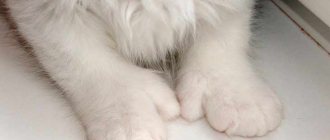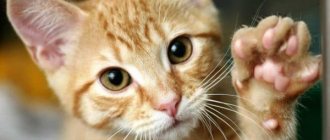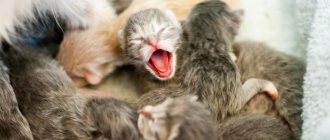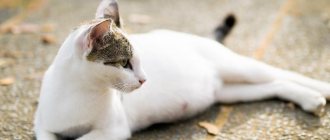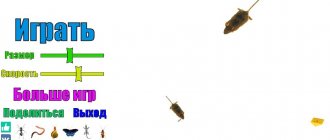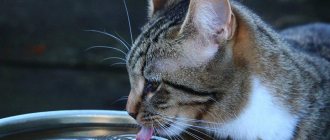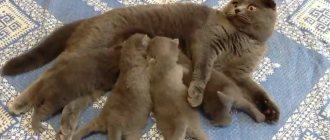Features of the structure of cats
Cats became pets much later than dogs. Therefore, they retained the body structure characteristic of all representatives of the cat family. The length of the body of a domestic cat varies within 60 cm, and the length of the tail is 25–30 cm. The average weight of a cat is 2.5–6.5 kg, but there are also impressive specimens weighing 7–9 kg. And cats of the Siberian and Maine Coon breeds can weigh 11–13 kg. There have been cases when cats reached 20 kg, but most often the reason for this was obesity.
On average, cats weigh up to 6.5 kg, but Maine Coons and Siberians can reach a weight of 13 kg
There are 4 parts of a cat's body:
- Head. It distinguishes between the brain (cat's skull) and facial (muzzle) parts. The front part also includes the forehead, nose, ears, and teeth.
- Neck. Here the upper part and the lower region are distinguished.
- Torso. It is represented by the withers (it is formed by the first five thoracic vertebrae and the upper edges of the scapula, which are on the same level with them), back, lower back, thoracic region (chest), croup, inguinal, abdomen, area of the mammary glands and prepuce, anal region, tail.
- Limbs. Thoracic (front): shoulder, elbow, forearm, wrist, metacarpus and pelvic (posterior): thigh, knee, shin, heel, metatarsus.
The structure of a cat's skeleton and its joints
The skeleton plays the role of a frame made of bones (a cat has about 240 of them) and has 2 sections: axial and peripheral.
The skeleton of a cat has about 240 bones
The axial section includes:
- The spine consists of 30 vertebrae, which are divided into 5 sections. The cervical vertebrae are large and allow the cat to turn its head almost 180 degrees without changing body position. The tail also belongs to the spine; it allows you to maintain good balance when jumping and falling.
The tail is part of the spine and helps maintain balance.
- The chest consists of 12 pairs of ribs.
- Cat skull. Unlike other mammals, cats have a short skull, and the size of the head in relation to the size of the entire body is small. Conventionally, the skull can be divided into 2 parts:
- facial, on which 13 bones are located;
- cranial, which contains 11 bones. The bones of the skull are stronger and larger than the facial part. The cat has a powerful jaw. Its main attribute is teeth. An adult animal has 30 of them. But even a kitten at the age of 3-4 weeks already has 26 sharp teeth. At 5–6 months, complete replacement of baby teeth with molars occurs.
Cats have shorter skulls than other mammals
The peripheral section includes the fore and hind limbs.
We all know that cats walk as if “on their toes”, without stepping on their heels completely. This is explained by the fact that the knee is located higher than we usually think - near the stomach.
There are 5 toes on each of the front paws, and 4 on the hind paws. Each toe ends in a sharp claw, hidden in a so-called pouch when at rest.
The cat only releases its claws when necessary.
Cat joints are divided into:
- sutures that form between the fused bones of the skull and consist of hard fibers, devoid of mobility;
- cartilaginous, which consist of durable cartilage; in cats, these compounds are more flexible and mobile than in other animals;
- synovial - these are connections between two or more bones, providing them with greater mobility, the main types of such connections: spherical,
- articulated.
Video: cat skeleton
How many claws does a cat have?
The number of claws in domestic cats is standard for representatives of these mammals. Thus, a healthy cat without abnormalities in the development of the limbs has 18 fingers. There are 4 main legs and 1 additional (vestigial) on the front legs, and 4 on the hind legs.
The claw processes are crescent-shaped and also have the specific ability to retract and extend when necessary. This modification occurs under the control of tendon ligaments and muscle fibers, naturally not without the participation of the nervous system.
According to their anatomical origin, claws are a derivative of the skin (as well as the nail plate in humans). A pet's claw consists of the outer layers of the epidermis, which contains a dense protein - keratin, which serves as protection for living soft tissues. In the inner part of the claw there is soft tissue, represented by a large number of nerve fibers and choroid plexuses.
Owners who regularly trim their cats' claws know that damage to the soft part (the pulp of the claw) is fraught with severe pain in the animal, and can also cause bleeding and inflammatory processes.
Muscular system
Cats have an unusually developed muscular system. This is proven by their amazing jumps over fairly long distances and fast running. Also, a set of muscles helps the cat maintain its aristocratic bearing.
Thanks to its developed muscular system, a cat is able to perform amazing movements.
In total, a cat has about 500 muscles. They can be divided into 3 categories:
- heart muscle;
- smooth muscles, which control internal organs and work involuntarily;
- striated muscles that the cat controls itself.
Special fibers are part of all muscles. Cat muscles contain 3 types of cells:
- are strongly contracted, but work for a short time - thanks to them, the cat is able to jump long distances; the strength of these cells is not able to act for long;
- with a strong contraction they work for a long time - a cat has few such cells, which explains its inability to run long distances;
- they contract quietly and work for a long time - this type of muscle cells is used in a cat when hunting, when it sits in ambush for a long time, and also sneaks quietly and gently.
When hunting, a cat uses muscle cells that can work for a long time
The structure of the shoulder girdle has a peculiarity: the muscles connect the forelimbs and the torso, while in humans they are connected by the collarbone. In cats it is in its infancy.
To take a step, the cat pushes off with its hind paws, and the front paws participate in the braking process. Thanks to the elasticity of the back muscles, the cat can easily curl into a ball and assume other bizarre poses.
X-ray of a cat
X-rays are prescribed for cats in different cases; it can be either emergency or planned. The study helps diagnose:
- Injuries to the limbs and skull.
- The presence of foreign objects in the body.
- Damage to the chest.
- Pneumonia.
- Pregnancy and the location of kittens in the uterus.
- Jaw pathologies.
- Anomalies of the heart and lungs.
- Formed metastases and other neoplasms.
X-ray of a cat
How to prepare your pet for x-rays?
Cats are always stressed during transportation, so they may arrive for x-rays very anxious. In this case, you can use the drug Kot Bayun, it has an excellent mild calming and sedative effect.
If you live in a large city, you can call a doctor with a mobile x-ray machine.
How is the procedure done?
Cats are not able to sit quietly in a certain position, much less in an unfamiliar room. Therefore, several specialists help take an x-ray. They fix the cat in the desired position, in this case the photo is of high quality. And then you can find pathologies on it or make sure that your cat is completely healthy.
Many cat owners are interested in this question: is x-ray dangerous for cats? Currently, only high-quality devices are used that comply with global health regulations. Therefore, the X-ray procedure will not harm your pet. The only thing I would like to note is that you must understand that radiation is not useful in any case, and there is no need to take pictures several times a month.
If you carefully read the article, then now you know how your pet’s body works. And now you understand that fluffy and cute creatures are actually agile and fast predators. And you shouldn’t be surprised that your pet asks for meat and also looks with surprise at the vegetables offered to him. Read also about anatomy.
Leather and wool
The skin and coat protect the cat’s body from external influences: germs, overheating and hypothermia.
The cat's skin protects the body from harmful environmental influences
There are two main layers in a cat's skin:
- Epidermis is the top layer of skin.
- The dermis, inside which there are blood capillaries, hair follicles, nerve endings that transmit signals, as well as sebaceous glands that respond to nerve signals. Each hair follicle has its own sebaceous gland, which produces sebum, which gives the coat its shine. Special sebaceous glands are located in the anus and between the fingers; they produce pheromones. The sebaceous glands located on the face serve the cat to mark its territory.
Cat hair has special cells called cuticles. They reflect light, giving the coat a healthy shine. Therefore, dull fur on an animal always indicates problems in the body. The hair follicle has an erector muscle, which is capable of lifting the animal's fur, for example, in case of severe fear or hypothermia.
Cats' fur is raised by the erector muscle.
Cat hair has a tactile function. Whiskers located on the face, throat and front legs of cats are called whiskers. They are clearly visible on the animal's body. There are also small hairs - trilotiches, which are scattered on the surface of the animal's body.
Why does a cat need claws?
A cat's claws are a true hunter's weapon. They can rip through the soft tissue of the victim without much difficulty. But at the same time, the claws are unusually sensitive, due to the fact that at the base they have a real plexus of nerve endings and blood vessels. Owners of domestic cats who have experienced the process of claw trimming know that damage to the claw pulp is a very painful and dangerous stage. It is important to carry out the manipulation clearly, strictly adhering to the tips for trimming claws.
In addition to the main 4 claws on the front paws, cats have additional fifth toes equipped with claws. These claws are not used by the animal in everyday life, but zoological experts say that they are necessary so that the cat can safely climb vertical surfaces.
The peculiarity of cats' paws is that they walk on their toes, without stepping entirely on their feet. As a result of evolution, a decrease in the load on the toes occurred by tightening the pads on the paws (a kind of calluses), which allows not only making walking silent, but also shock-absorbing in the right conditions when jumping from a height.
A cat's claws are an important part of their essence. Therefore, the ability and desire to scratch everything around, starting from a young age, does not, in fact, represent a behavioral problem. This is a normal physiological condition.
Claws are important for the animal and are used for proper coat care. With the help of claws, the pet untangles hairballs, combs the fur coat, improving air circulation between the skin and the environment. In addition, cats need claws to stretch and train muscle fibers and tendons. By hooking onto the surface, a cat can perfectly stretch stiff and tense muscles.
The process of sharpening claws is not always essentially sharpening. By scratching the scratching post, and in the absence of one, even the furniture, the cat gets rid of the dead scales on the claws, freeing the healthy part. Also, with the help of paws and claws, cats leave camouflaged markings of territorial boundaries. And naturally, the basic function of a cat’s claws is to provide protection during an attack by enemies.
The functions of a cat's claws allow it to better maintain balance and balance when necessary. Claws provide additional support when walking or running, jumping or climbing to heights.
Respiratory system
Breathing provides the body with oxygen and also gets rid of excess water.
The cat's respiratory system is similar to most mammals.
Respiratory organs include:
- Nose. The inhaled air enters the nasal cavity, where mucus is contained, which traps small dust particles, hairs and bacteria and prevents them from penetrating into the lungs.
The nose traps inhaled dust particles, hairs and bacteria
- The nasopharynx is the part of the pharynx through which air continues to flow further along the respiratory tract.
- The larynx is a cartilaginous tube that seals the airways when swallowed.
- The trachea is a cartilaginous tube that carries air into and out of the lungs. It runs from the larynx to the heart, where it divides into 2 bronchi.
- The lungs are the key organ of the respiratory process. The lungs are divided into left and right lobes. The left lung still has an additional lobe, so its size is slightly larger. The lungs contain blood and respiratory vessels. The trachea is divided into bronchi in the lungs, the bronchi are divided into bronchioles, and these, in turn, are divided into alveoli - small air bubbles that transmit oxygen to the blood vessels. Parenchyma is a collection of various vessels in the lungs.
- The diaphragm is a muscle that allows the lungs to expand.
The very process of a cat's breathing can be described as follows: under the action of the pectoral muscles and diaphragm, the lungs expand and pull air through the nasal cavity into the respiratory tract until it reaches the alveoli, which come into contact with the blood vessels and saturate them with oxygen, while at the same time removing carbon dioxide from them.
How to trim a cat's claws
In addition to the standard nail clippers, which are the first to be found in every pet store, there are several other tools for cat “pedicure”. List of products used for trimming nails
Table 2. Tools for cat pedicure
Scissors | A classic and budget option, which cat owners most often limit themselves to. Manipulation with scissors does not cause any particular difficulties; their main disadvantage is the thickness of the blade, which increases the likelihood of capturing the sensitive part of the claw, equipped with blood vessels. |
Wire cutters | This option differs from scissors by a special notch in the blades that adapts to the shape of a cat’s claw. With the help of nippers, it is much more difficult to make a mistake and injure a cat’s claw, due to their ergonomics and specialization for cats. |
Guillotine trimmer | This specific tool is recommended for those cat owners who have already mastered the previous options and feel confident. The sharp blade of the trimmer extends when you press the handle and easily trims the tip of your pet's nail |
Nail file | This remedy is well known to every person, but it is used least often on animals. However, it is the file that allows you to complete the work started with a nail clipper. In a cat pedicure, just like in a human pedicure, uneven corners may remain, which are smoothed out thanks to filing |
Circulatory system
The cat's circulatory system includes the heart and vessels that carry blood throughout the body:
- arteries are vessels through which blood flows from the heart to the organs; they are saturated with oxygen;
- veins - vessels through which blood flows from organs to the heart, are saturated with carbon dioxide;
- capillaries are small vessels that ensure the exchange of substances between tissues and blood.
The heart is a special muscle that regulates the movement of blood through the vessels. A cat's heart weighs 16–32 g, is four-chambered and has 2 halves, each of which has an atrium and a ventricle. The left side is responsible for arterial circulation, and the right for venous circulation. The systemic circulation originates in the left ventricle and passes into the right atrium. The small circle comes from the right ventricle, which ends in the left atrium, then passes into the left ventricle, starting the large circle again.
Pulse - compression and weakening of blood vessels in time with the rhythm of heart contractions. On average, in cats it reaches 130–140 beats per minute and can vary depending on the emotional and physical state of the cat.
You can feel your cat's pulse on the artery located on the inside of the thigh.
A cat has a unique blood composition, and the blood of other mammals is not suitable for it. There are three blood groups: A, B, AB.
The liver and spleen produce blood cells. The majority of the blood composition is occupied by yellow plasma, 30–40% by erythrocytes, and the rest by leukocytes and platelets.
scratching post
Monthly nail trimming does not always relieve your cat of the need to take care of her claws on her own. If you see that your pet, despite timely care, periodically looks for materials on which it wants to “practice,” then it makes sense to think about buying a scratching post. A scratching post will allow the cat’s other needs, which we talked about earlier, to be realized. Marking territory, kneading muscles, grinding claws - all this will be provided by a scratching post for your pet.
A flat scratching post is a convenient place to start introducing your cat to such devices.
Please note that not all cats accept scratching posts. There are times when owners, having bought a huge gaming complex for their cat, sell it as completely unnecessary. To decide whether your pet is interested in this type of leisure activity, you can start by getting acquainted with such a simple and cheap option as a flat scratching post. It is upholstered with a special hard material that allows the cat to successfully tear at it. Attached to some vertical surface, it will give your dog an initial idea of scratching posts and allow you to predict his reaction to such devices.
For some cats, the purpose of the scratching post remains a mystery.
A flat scratching post needs to be hung high enough so that the cat can stretch all its muscles while sharpening its claws. The minimum mounting height for such a scratching post is eighty centimeters.
Types of scratching posts
In addition to the flat version, there are the following types of scratching posts:
- Post – A cylindrical post covered with a stiff material (such as jute). At the top of such a pillar there is usually a platform on which the pet can climb if desired. Sometimes the posts are equipped with additional toys to attract attention, sometimes they make do with a minimalist design. You can make a claw post with your own hands by taking a leg from a table or coffee table and upholstering it with the appropriate type of fabric;
The stand is suitable for both adults and little ones
- A scratching post built into the play complex. On the Internet you can find many design solutions for the location of entire cat “palaces” in apartments. They combine posts, flat scratching posts, beds, and everything you can imagine. It would seem that the cat’s leisure time in such conditions is guaranteed, but sometimes it happens that the pet remains completely indifferent to such “architectural ensembles” in his honor;
Play complexes are upholstered with the same materials as flat scratching posts
Digestive and excretory systems
The digestive system regulates the process of eating, absorbing nutrients and eliminating undigested residues.
The organs of the digestive system are involved in the process of digesting food
The digestion cycle is carried out per day. This process involves:
- oral cavity;
- pharynx;
- esophagus;
- stomach - the pH environment in the stomach is more acidic than in humans, which allows it to digest rough food and fight bacteria in the food;
- small intestine, in cats it is short and does not allow carbohydrates to be digested well;
- colon;
- liver;
- kidneys
The process of digestion begins in the mouth as soon as food enters it. The salivary gland softens hard food, facilitating its passage into the stomach and esophagus.
The process of digesting food begins in the mouth
Under the influence of saliva, food begins to break down in the mouth. The complete food processing process takes place in 4 stages:
- The fundus of the stomach contracts, pushing the contents toward the pylorus.
- The contents of the stomach enter the duodenum in the following order: liquid, carbohydrates, proteins, fats.
- Food passes through the small intestine where nutrients are absorbed.
- Food debris enters the large intestine, and feces are formed and excreted.
A cat's stomach is constantly active. The cat usually eats often, but little by little (10–16 times).
Why does a cat sharpen its claws?
Why a cat sharpens or chews its claws is of interest to many owners of tailed pets. In addition to sharpening its weapons, the cat sharpens keratinized processes due to discomfort. Thus, dead particles of claws cause inconvenience to the cat in the process of retracting them into the pad. The pet begins to get nervous and tries to bite off or grind off the interfering layer.
Find out also about cat declawing>>>
This is what most often provokes the animal to tear up the sofa, curtains or other suitable surfaces. It is almost impossible to avoid this, so it is recommended to first purchase a special scratching post and accustom the animal to it. The cat will know the right place where it can easily sharpen and put its defense weapon in order.
If a cat chews its claws, or lets them into the owner’s body while lying on its knees, it should not be scolded under any circumstances. Thus, the animal leaves its specific secret on its beloved owner, indicating to other animals that the owner is busy.
Another reason that a cat begins to “sharpen” its claws on its owner is the so-called milk step. This phenomenon is caused by reflexes from childhood. At an early age, kittens intensively knead their mother's belly with their paws and thus stimulate the flow of milk. Not wanting to receive such affection from a mustachioed pet, veterinarians recommend regular trimming of cats' claws or purchasing special caps for the claws.
Brain and endocrine system
Anatomically, a cat's brain is similar to the brain of any mammal.
The structure of a cat's brain is similar to that of any mammal.
Different parts of the brain are responsible for one or another function in the body:
- the parietal lobe processes information received through the senses;
- the large brain is responsible for consciousness;
- the corpus callosum connects the right and left hemispheres;
- the frontal lobe is responsible for voluntary movements;
- the olfactory bulb is responsible for the perception of smells;
- the hypothalamus secretes hormones and controls the autonomic nervous system;
- the pituitary gland coordinates and controls the work of other glands;
- the spinal cord transmits information from the brain to the body;
- the pineal gland is responsible for sleep and wakefulness;
- the cerebellum controls movements and muscle function;
- the temporal lobe is responsible for behavior and memory;
- The occipital lobe receives visual and tactile signals.
The endocrine system influences the basic functions that occur in the body with the help of hormones. Most hormones are secreted by the pituitary gland and hypothalamus. Also some of them are produced by the thyroid gland, adrenal glands, ovaries in cats and testicles in cats.
The endocrine system influences the body's basic functions
Table: hormonal regulation of cat body functions
| Hormone name | Where is it produced? | Functions |
| Antidiuretic hormone (ADH) | Hypothalamus | Urine concentration |
| Oxytocin | Hypothalamus | Labor and feeding of kittens |
| Corticoliberin | Hypothalamus | Adrenocorticotropic hormone concentration |
| Adrenocorticotropic hormone (ACTH) | Hypothalamus | The adrenal glands produce cortisol when the cat is afraid |
| Thyroid-stimulating hormone (TSH) | Pituitary | Thyroid activity |
| Melanocyte-stimulating hormone (MSH) | Pituitary | Melatonin synthesis in the pineal gland |
| Follicle stimulating hormone (FSH) | Pituitary | Production of sex hormones and eggs in females |
| Luteinizing hormone (LH) | Pituitary | Production of sex hormones and sperm in males |
| Adrenalin | Adrenal glands | Cardiac activity and dilation of blood vessels |
| Progesterone | Ovaries | Preparing the uterus for implantation of embryos, maintaining pregnancy, stimulating the development of mammary glands |
| Testosterone | Testicles, adrenal glands | Development of the cat's reproductive system, development of secondary sexual characteristics |
| Thyroxine | Thyroid | Activation of metabolism, thickening of the uterine walls, increase in heart rate |
LiveInternetLiveInternet
I can’t imagine how to stop a cat from scratching furniture?
I bought her two different types of scratching posts, one she ignores, the other she seems to sharpen her claws...
But the trouble is, she still can’t calmly walk past the sofa that she likes!!! Recommendations How to stop a cat from scratching furniture?
didn’t help me much... So I decided, guided by the recommendations I found on the Internet, to trim her nails.
Claws are a cat’s weapon, with which it defends itself from enemies, holds and captures prey, and climbs into the most inaccessible places. That is why animals constantly sharpen their claws, keeping their natural weapons sharp and long. Cats do not scratch surfaces on purpose; they have an instinctive habit. When scratching fabric or wood, the old claws of animals peel off and fall off, and new and sharp claws grow in their place. Many cats bite their nails on their own - this is not a big deal. This means that in this way she gets rid of old and exfoliated claws.
If a cat does not take care of its natural weapons, then the owner will have to do this, since exfoliated claws can become inflamed and cause lameness and pain.
Cats that don't like or can't exercise much—due to illness, old age, or being kept indoors—claws may become too long and catch on carpets and upholstered furniture.
Structure of a cat's claw
A cat's claw is a rather complex system, in addition to the claw itself, which includes joints, muscles, tendons, and ligaments.
This device allows the cat to hide and extend its claws when necessary.
Without going into details, we can assume that the visible part of a cat's claw consists of two parts. The cornea, marked 1 in the figure, and the “living part”, replete with blood vessels and nerve endings, is the pulp (2). You can cut off only the dead part of the cat's claw, without touching the pulp in any way. Usually it is enough to remove 1, maximum 2 mm from the tip of the claw (in the figure - along line 3).
The upper, old, dead stratum corneum is removed from the cat’s claws in the form of a whole “case”, repeating the shape of the claw or its individual parts. The cat's fifth claw, located on the back of the front paws just above the toes, never scratches on anything and grows freely, so that in older cats it bends into a ring and can even grow into the skin. It would be a good idea if you regularly checked the length of your cat's claws. Remember: the claws on the hind paws are shorter than those on the front paws.
If the claws are devoid of pigment (transparent), then pink blood vessels can be seen under them, reaching almost to their tips. If the vessel does not reach the tip, then the claw is too long, so the veterinarian can safely trim it without fear of damaging the vessel and thereby causing bleeding. If the claw is pigmented (black), then the vessel is not visible, and the place where it should be cut is determined by experience. Remember: as the claw grows, the vessel also lengthens, so if you cut the claw to normal length, you may damage the vessel; It is best to trim the nail so that it is slightly longer than usual and trim it again after a couple of weeks. Trimming a cat's claws without an assistant is a difficult task, so it is best to trim a cat's claws together . Ask your “assistant” to hold the cat firmly (preferably on a hard, flat surface, such as a table), arm yourself with clippers and start cutting: trim the claws on each paw in turn. With your index finger, grab the paw pad underneath the claw, and with your thumb, the skin on top of the claw, and squeeze your fingers lightly. At the same time, the claws will appear from the pads. Movements must be fast, precise and neat. You need to cut exactly across the claw, and not diagonally .
When finished cutting, you can polish the sharp edges with a nail file or emery block. Make a neat cut across the claw, but not diagonally. If bleeding does occur, it can be quickly stopped with a styptic pencil or hydrogen peroxide; You can also attach a piece of cloth or sprinkle with neutral powder: talcum powder, flour. Often, pressing a claw into a bar of soap is enough to stop mild bleeding. If bleeding is severe, apply a pressure bandage and contact your veterinarian.
But even without sanitary treatment, the blood should clot within 5 minutes
A haircut may also be necessary for another reason: if the claw is broken and a piece of it is dangling at the end. It is best to completely cut off this piece, and in case of bleeding, proceed as described above. You can trim your claws so that the cat can less injure its owners, itself and its fellow cats with accidental movements, so that it does not get caught on furniture and its own scratching post with too long and sharp claws.
However, it should be remembered that the safety of furniture is not solved by trimming the nails. To preserve the furniture, you need to buy or make a scratching post for your cat and teach the animal to sharpen its claws on it. It is impossible to completely deprive a cat of the ability to sharpen its claws, since sharpening its claws is a cat’s natural need.
Advice: If you decide to trim your cat's claws, do not try to cut them as short as possible - you risk damaging the vessel and causing pain to the cat. It is better to trim less, but more often, and for the first time it is recommended to contact an experienced cat owner or veterinarian so that he can show you how to trim nails correctly.
Cat nail trimming tools
It is necessary to regularly trim the claws on the paws using sharp tweezers or scissors (while the kitten is young, its claws are soft). A special nail clipper is also sold at any pet store. It is better to accustom a small kitten to regular trimming of its claws so that the animal does not develop a panicky fear of this procedure.
Note! In order to trim a cat's claws, veterinarians do not recommend using ordinary “human” scissors. A cat's claw is structured differently than a human's, so it is easy to split, which can cause problems later on. Fortunately, special tools have been invented that can be used to conveniently and safely trim a cat’s claws. In stores they may be called claw clippers, trimmers (or even more pretentiously, something like “claw clipper”, a tracing paper from the English Cat Claw Clippers).
There are several types of tools suitable for trimming cats' nails:
| Scissor trimmers. Similar to regular scissors, but the edges of the cutting surfaces are reinforced and shaped to prevent damage to the claw, covering it around the perimeter. |
| Guillotine type trimmers. More advanced option. These pliers are preferable as they provide a better cut of the tip of the claw. |
| Regular human nail clippers. If you are unable to get cat nail clippers, you can use human nail clippers as a last resort. But still, try as soon as possible to find tools specifically designed for this procedure. |
Tips: It is easier to use guillotine and wire cutter types. The scissor type is used when the claw has grown so long that it has become a circle. Long claws can grow into the pad.
When buying a device in a store, I recommend, if possible, to test the nail clipper in action. The devices are made of different quality, we don’t need crap (and there is plenty of it on sale, especially made in China - I was convinced from my own experience :). It's very easy to check - try cutting a match or a toothpick. This must be done with a strong and sharp movement; if the “snack” went well and did not “chew”, you can take it.
General recommendations
Secure the cat as shown in the picture. To do this, you need to sit the cat on your lap with its back to you and take it by the paw so that the claws protrude from the pads.
All the claws will then line up in one row and it will be easy for you to inspect and trim them. Hold the instrument in your right hand
When cats are at rest, their claws are hidden, so you need to gently press down on your finger, holding the pad between your thumb and forefinger so that the entire claw appears.
After this, you need to trim the tips of the claws - they consist of dead tissue, and removing them will not bring any discomfort to the animal. Most cats have light, transparent claws, which allows you to see the blood vessels and nerve endings that give the base of the claw a pink color and form a sensitive area .
It is best to trim your cat's claw at a distance of approximately 2-3mm from the sensitive area. We place the claw inside the guillotine, aim and cut. I remind you: the movement must be sharp and strong!
If you touch a sensitive area, the claw will begin to bleed and the cat will be in pain.
The main thing is not to touch these vessels during the “manicure”, then the cat will definitely not be hurt.
With black cats it is more difficult - they can have dark, opaque claws, and determining the length to which a claw can be trimmed is quite difficult. But try not to exceed 2-3 mm, so that the cat does not experience any unpleasant sensations. In general, cut off only the sharp tip of the claw...
How to do this correctly, watch the video:
How to trim a cat's claws with nail clippers
If you don’t have a special tool for cutting your cat’s nails, you can use nail clippers. The main thing is that they are sharp.
Here we go:
3. Most cats have light-colored claws, which allows you to see the blood vessels and nerve endings that give the base of the claw its unique color and form a sensitive area.[/td]
| 1. Place your cat on your lap in a comfortable position and wait for her to calm down. The calmer the cat feels, the easier the procedure will be. Hold the instrument in your right hand. Take the nail clipper so that it is comfortable to hold it - your thumb on the lever, the other four under the lower handle of the nail clipper. Press the lever lightly to check the operation of the tool. |
| 2. Cats have hidden claws, so you need to gently press your finger while holding the pad between your thumb and forefinger so that the claw appears. Examine the claw carefully to determine exactly where the pulp ends and the dead area of the claw begins. |
| 4. The cutters should be positioned perpendicular to the animal’s claw (cut from top to bottom). Place the claw in the nail clipper so as not to touch the pulp. Press the lever with emphasis and determination. |
| 5. Light-colored claws, where the sensitive area is clearly visible, can be trimmed at a time. |
| 6. If the nippers are placed parallel to the claw, as shown in the figure, the claw may separate. |
| 7. The sharper the cutter, the cleaner the cut. You can use a nail file to smooth out the end of the claw. |
| 8. A cat has a claw on the inside of each paw, the so-called dewclaw. They must be trimmed, as they do not wear off on their own and can grow into a circle and grow into the pad. |
Nails should be trimmed from top to bottom, not from side to side. The tip of the claw is placed in the trimmer hole and when the handle is pressed, the cutting blade passes through the claw.
The trimmer handles can be directed towards the floor or ceiling, as you wish.
The cutting blade, if it becomes dull, can be replaced
Tip: While you are just learning how to trim your claws, you don’t need to do this on all your paws at once. Treat as many claws as the cat allows, as long as possible. Until the cat is accustomed to this procedure, it is not worth trimming all its claws in one day. At first, it is generally recommended to limit yourself to one claw per day. Gradually the amount can be increased, and after some time the procedure will become completely familiar to your pet. It is enough to trim the nails of an adult cat once a month.
Once both you and your cat get used to trimming their nails, it will become routine for you and you will be able to handle everything quickly.
And here's a video on the topic:
Did you know
What do you need to know before adopting a kitten?
How to CORRECTLY give a pill to a cat
How to CORRECTLY give a cat an injection
Nervous system
Cats have a particularly sensitive nervous system that controls the actions of the entire body, which can be voluntary or involuntary. For example, during a hunt, an animal controls its muscles, preparing them for a jump or other action. The signal enters the brain, and from it passes to the muscles and the most accurate movement is obtained. Involuntary actions include breathing, swallowing, etc. They are regulated by the autonomic nervous system.
The cat's nervous system consists of two types of cells:
- Neurons. Branches extend from the body of the neuron - dendrites, which receive information from other cells. Each cell has another long extension, an axon, that sends messages to other nerve cells or directly to organs. All of these messages are carried by neurotransmitters, or chemicals produced in the axons.
- Support cells that produce myelin. Myelin is a fatty, protective membrane that covers the largest axons and increases the speed at which messages are transmitted between nerves. A nerve fiber consists of an axon, a myelin sheath, and a cell that produces myelin.
The nervous system controls the actions of the entire body
Sense organs
With the help of its senses, a cat interacts with the world around it: smells, touches, tastes.
Vision
Cats have the largest eyes among domestic animals. Developed peripheral vision helps the animal notice small details and not lose sight of prey. The strongly protruding cornea creates a large viewing angle of 250 degrees. It is also noted that animals are able to distinguish colors, although a limited number - about 6.
Reproductive system
The reproductive system is responsible for procreation.
Cat reproductive system
The female reproductive system includes the following organs:
- vulva;
- vagina;
- cervix;
- uterus;
- the fallopian tubes;
- ovaries.
The vulva and vagina (vagina) - organs involved in copulation, are also part of the birth canal.
At the onset of puberty, a cat's ovaries enlarge
The ovaries are the cat's reproductive organs that produce the hormones estrogen and progesterone. Estrogen is needed for the development of the egg, and progesterone prepares the uterus for pregnancy. When puberty occurs, a cat's ovaries enlarge. At approximately the age of 11–13 months, the first estrus begins - active readiness for mating. On average, it lasts a week and can be repeated every 3 weeks until pregnancy occurs.
